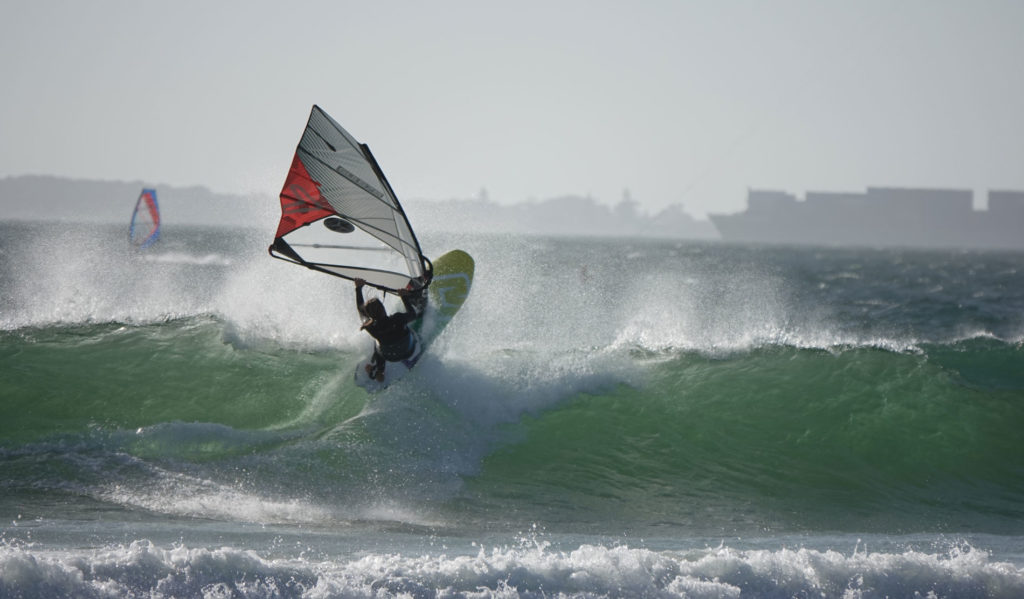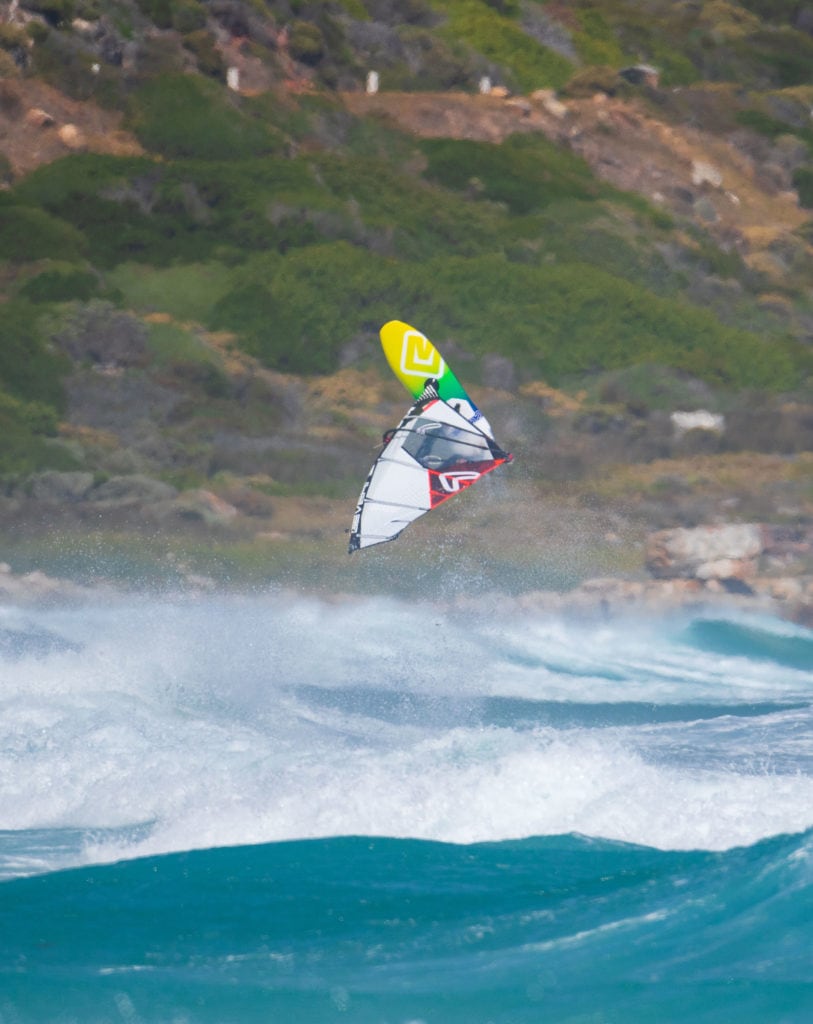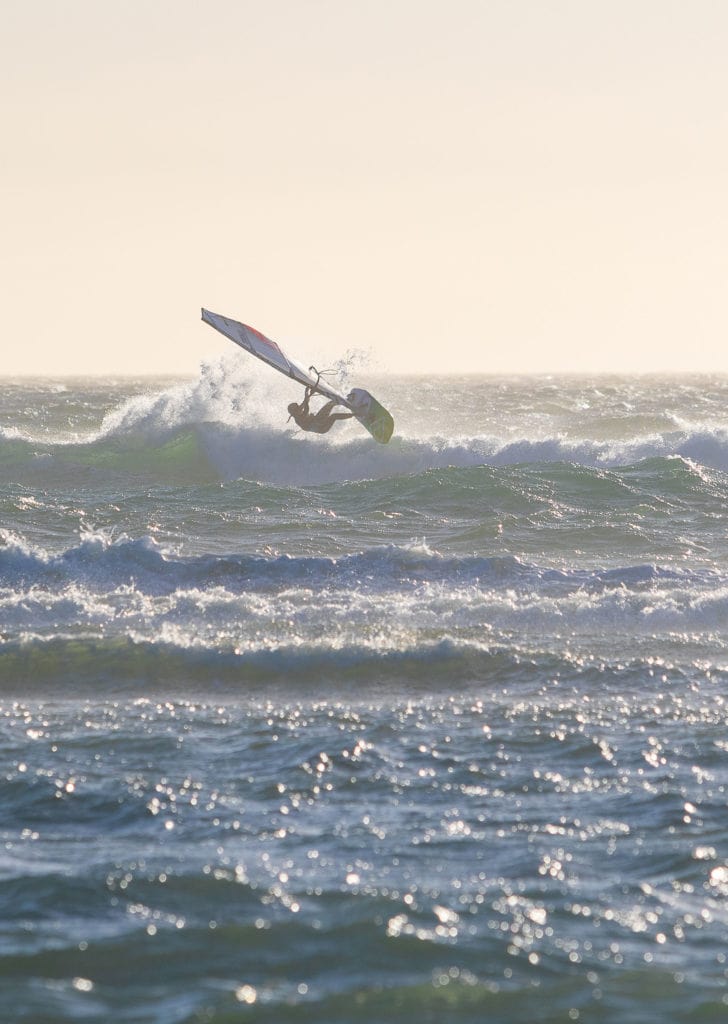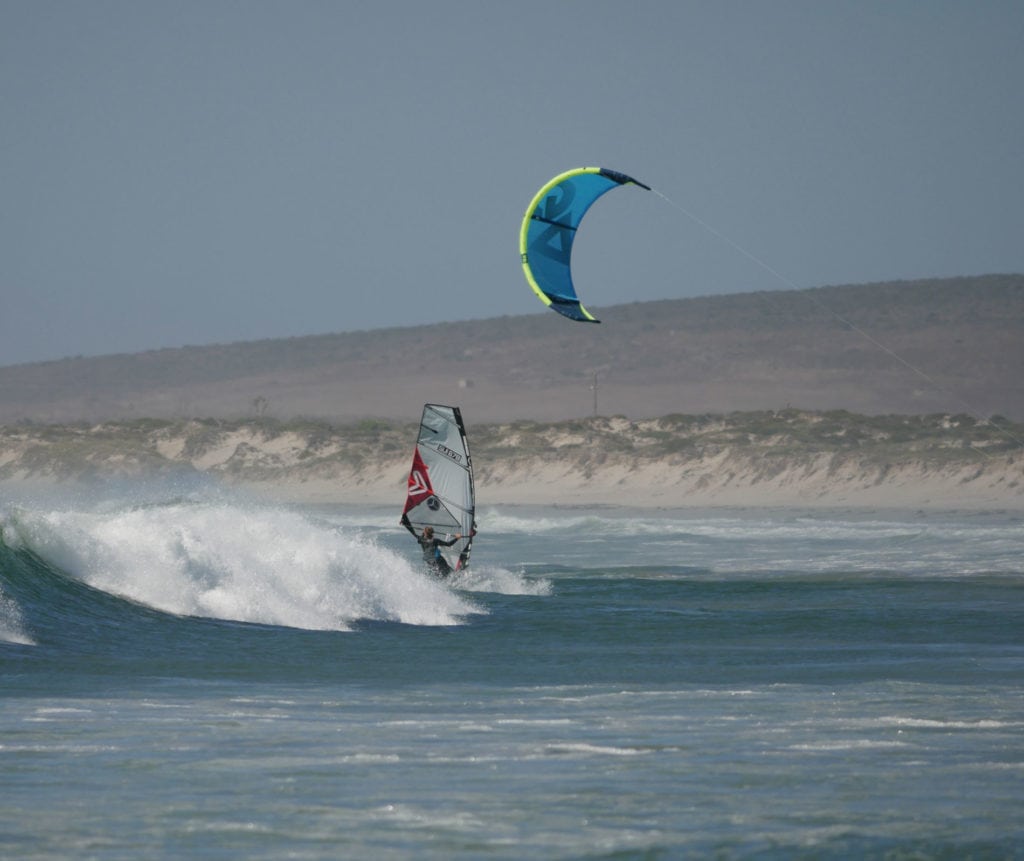The photos of our winter wave sessions in Cape Town, South Africa, are the stuff of dreams. A wave destination par excellence, there’s plenty for freestylers and beginners alike. Cape Town and the surrounding region have a lot to offer, so get on board for a trip where you’ll enjoy yourself both on and off the water.
Text: Pauline Katz
Heading for the spots
For those who have never had the chance to go to Cape Town, the first thing to do is to get your bearings, as the list of spots is long. You won’t be sailing in Cape Town itself; the main spots are about 30 minutes north of the city center, in the Blouberg/Table View area. This is also where most people choose to stay, so you won’t miss a single session. From this area, you’ll also be between the superb spots of the Cape of Good Hope peninsula to the south and the more surf-oriented spots to the north.

The Blouberg area, a hot spot for windsurfers and kiters
The Blouberg area has all the facilities (accommodation, restaurants, supermarkets) and is only a few minutes from the spots that most often work. In Cape Town, days often follow one another, so you’ll be able to try out several spots in the same day. Start at 10 a.m. on the Sunset spot. Here you’ll find
and surf, with Table Mountain as your backdrop. At mid-day, when the wind becomes too strong for Sunset, you’ll have three options: Big Bay is probably the best spot for gaining confidence in the waves. It’s also great for a drink after your session. A few kilometers further north, the
Haagkat, more surf than jump, offers excellent waves and a slightly side wind. When the swell is small, continue on to Melkbosstrand. Here you can jump and surf, even if the waves are not very orderly and the bottom bar can be quite impressive. If you’re a freestyle or flat-water enthusiast, the Rietvlei lake is also in this area, although access is subject to a charge. To round off the day, everyone meets up at Pakololo, which isn’t a spot, but a bar!
These spots all work with the typical Cape wind, the Cape Doctor, which blows almost every day between December and February. It’s a south-easterly wind and its name comes from a local belief that it cleanses the Cape of pollution.

The magnificent Cape of Good Hope peninsula
The Cape of Good Hope Peninsula probably has some of the most beautiful spots, but sailing conditions require a certain amount of experience. The Witsand spot is undoubtedly the most accessible. The wind blows side-on and allows for some nice jumps and surfing. You may also have the opportunity to do a starboard session in a northerly depression.
north. A few minutes further south, you’ll come to the friendly village of Scarborough, with its many cafés, which are definitely worth a stop. Below, you’ll find the magnificent Scarborough beach and its turquoise waters. It’s a spot with a fast, technical wave that makes aerialists happy. To access the spots further south, you’ll need to enter the Cape of Good Hope Reserve, a visit we strongly recommend, even without a sailing objective. Here, you can take a photo with the mythical Cape of Good Hope sign and have the chance to observe many animals, including the pack of baboons, with whom it is strongly advised to keep your distance. For the
you may be lucky enough to do a session on the Cape Point spot, just a few hundred meters from the famous cape. Here you’ll surf exceptional waves, often several meters high, and enjoy a tremendous sense of freedom, as the next mainland is Antarctica. Also in the reserve, the Platboom spot is very wild and also requires a good level of wave riding.

Northern spots, the pure surf option
The northern spots work less frequently and are 100% surf-oriented. If you’re lucky, you’ll be able to surf long waves with a slightly side or even side-off wind. These include Yzerfontein, Patternoster and Elands Bay. These are the spots that best handle the big swells. Last season, a few brave souls surfed waves of up to 8 meters. For beginners, the Langebaan lagoon is a good option.

No wind, no problem
There’s so much to do in and around the Cape, you’ll be glad of a few windless days. For the more sporty, you can hike Table Mountain, Lion’s Head or surf at Muizenberg. For the more inquisitive, visit Robben Island, taste wine in Stellenbosch, greet the penguin colony at Boulders Beach, stroll along the wild
Noordhoek beach, the botanical garden at Kirstenbosc or the market at Biscuit Mill. For party-goers, discover the eclectic atmosphere of one of the bars on Kloof Street.

Practical info
Period
– December → February ;
– possibly November & March.
Material
– Sails rider small ( 80kg): 3.0 – 4.2 / 3.4 – 4-7 / 3.7 – 5.2 m2.
Car
– All international agencies are present. A few local agencies: Rentacheapie (old Golfs from the 70s) or Kenings (closed pickups).
Accommodation
– Numerous apartments and hostels in the Blouberg area. For city dwellers, Sea Point and Camps Bay are good options. The village of Scarborough to the south
is also very attractive.
Flight
– See Internet for best rates. NB: KLM and Air France generally accept only one 23 kg boardbag per person. However, you can also book a ski bag
ski bag for all your sails.
Airport
– Cape Town International, about 45 minutes from the Blouberg area.

